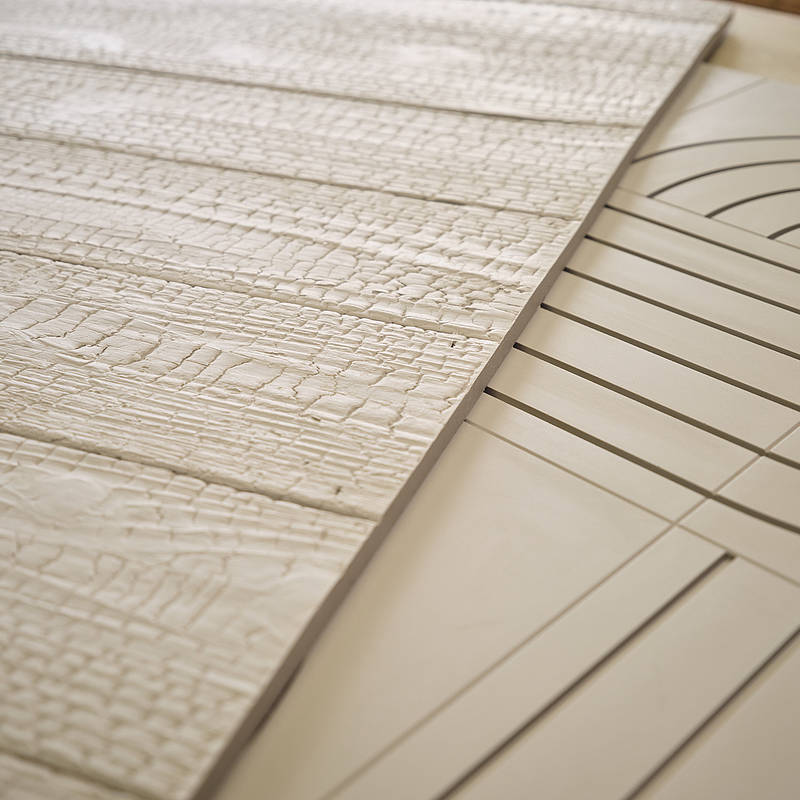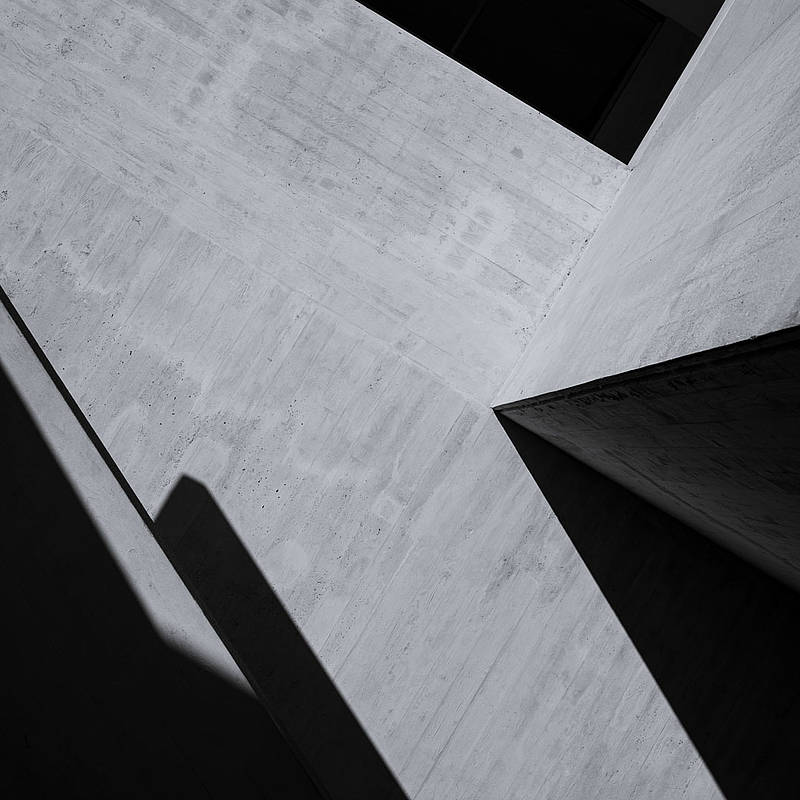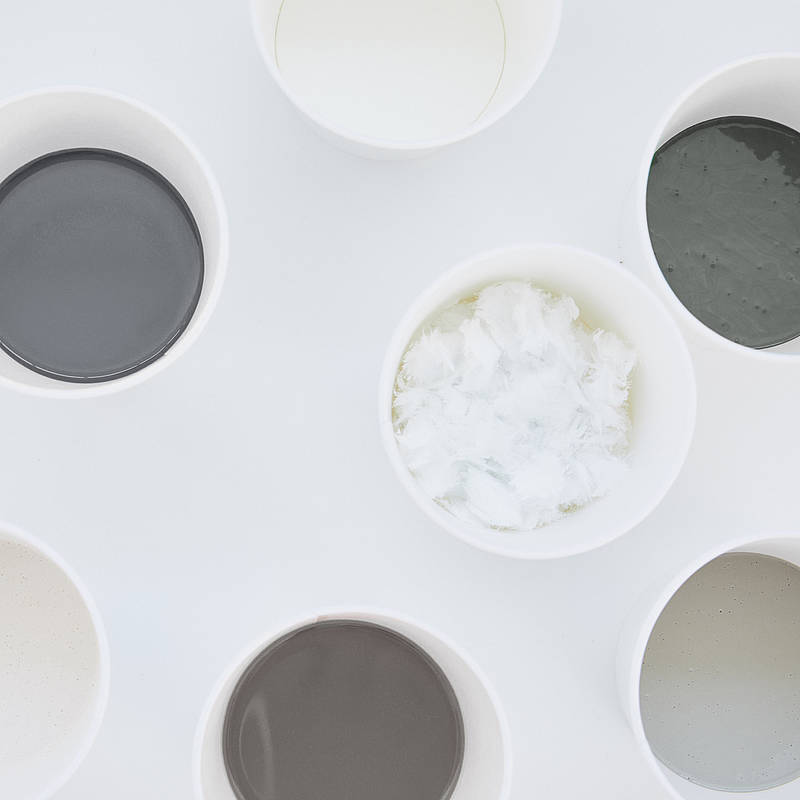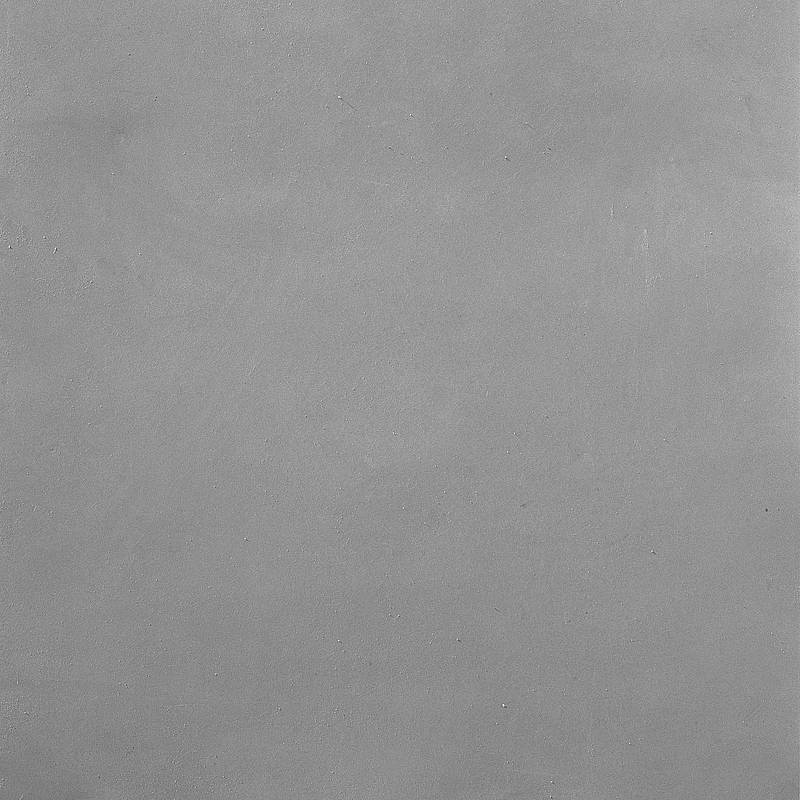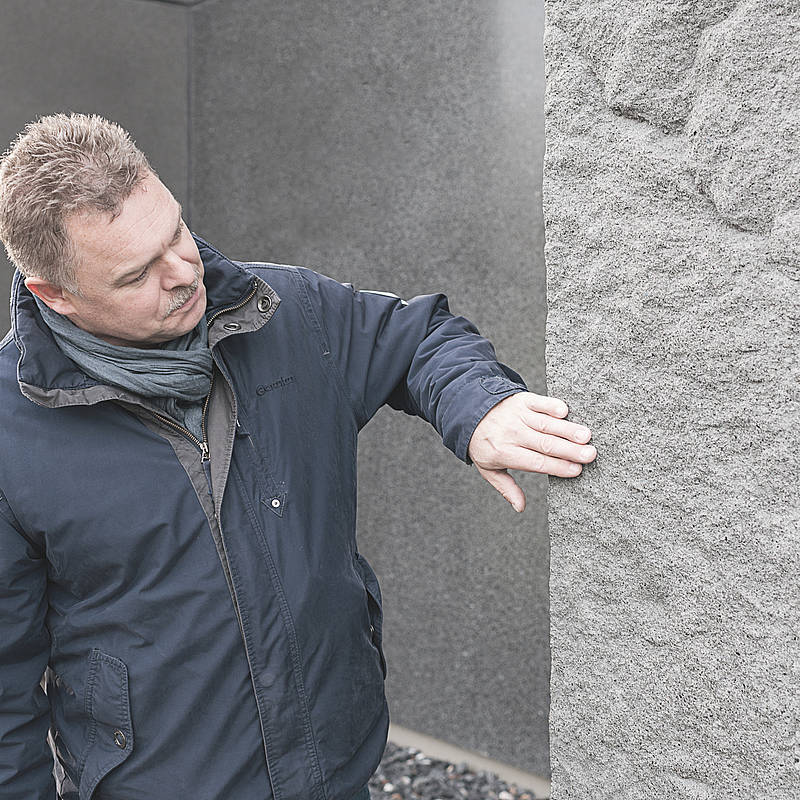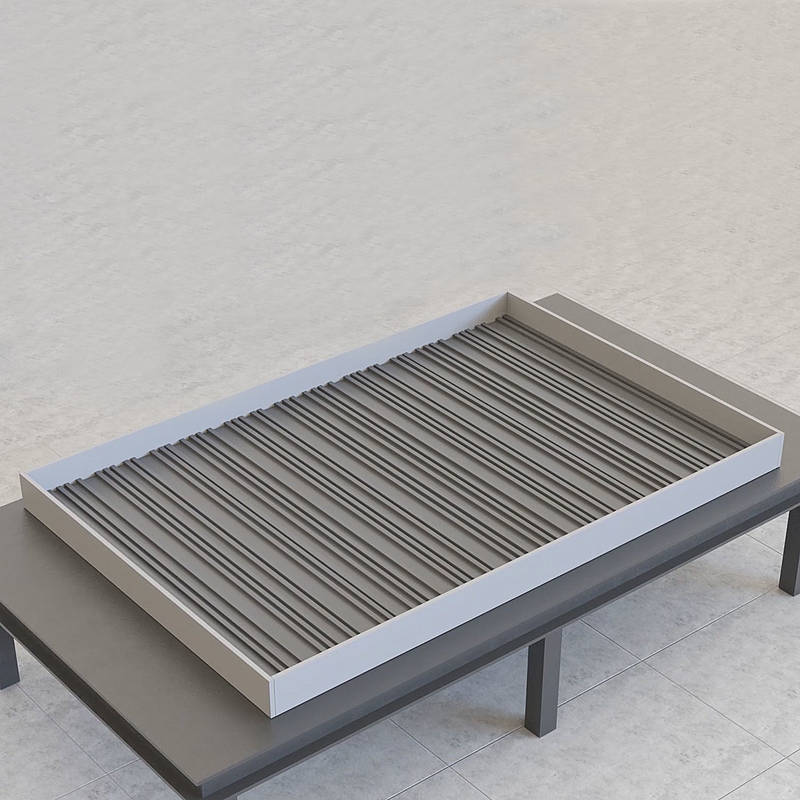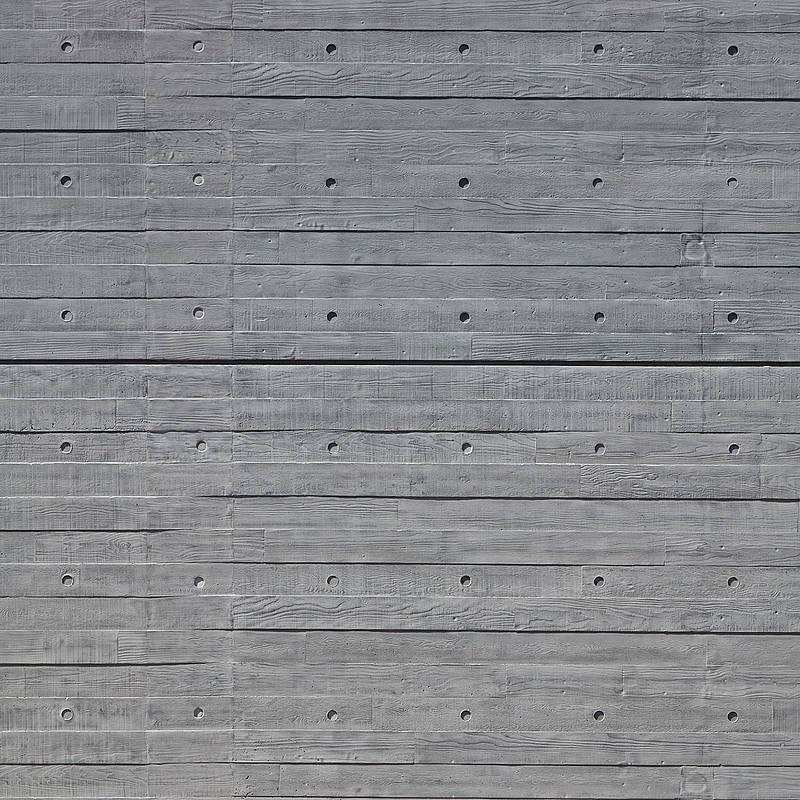The choice of the right formwork
Formwork has a major impact on the appearance and quality of an exposed concrete surface.
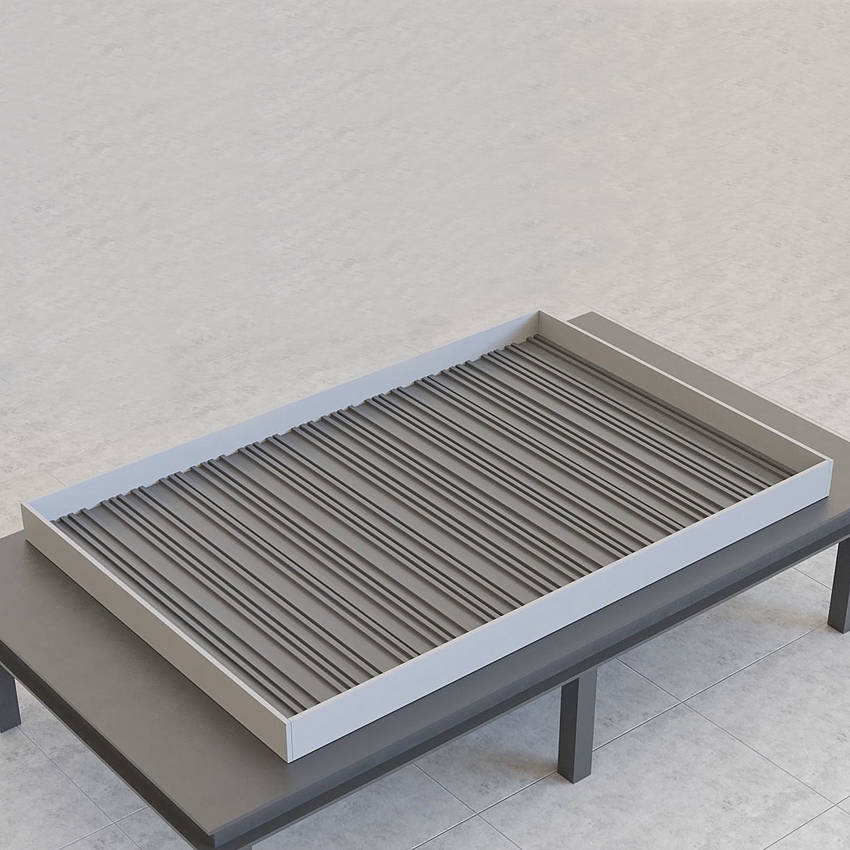
Formworks hold the liquid concrete in shape when it is poured. After setting, they are usually removed. Which formwork is the right one for a construction project depends on the function and type of structure. The choice of formwork system and shell can also have a decisive influence on the appearance of the concrete surface.
Basically, formwork must be dimensionally accurate, tight, clean and stable. This is the only way to ensure that the formwork withstands the pressure of the penetrating liquid concrete during casting, that no concrete escapes, that the concrete parts are produced in the correct dimensions and that the visible surface has no blemishes.
The formwork systems are divided into beam formwork and panel formwork. With exposed concrete, the beam formwork is usually used. It allows for a free choice of the formwork element sizes and the arrangement of the formwork ties. The panel formwork has a characteristic formwork joint, where you can see the frames of the panel formwork. This is usually not desirable with exposed concrete.
Various materials can be used for the formwork shell.
- Wood, incl. wood-based panels
- Plastic
- Steel
Wooden formwork has the longest tradition in the construction industry. Depending on the choice of wood, it gives the finished concrete a rough or smooth surface. Wooden formwork can be used like a negative mold on concrete to imprint an explicit wood look into the concrete. Sawed boards look more rustic. Planed boards can also be seen well later in the concrete, including with knotholes.
Multilayer wood-based panels with a film coating are standard in concrete construction as well as in exposed concrete. The range of products is very wide here, and they also work with different film coatings. The result here is a smooth concrete surface.
Formwork shells made of solid plastic are also possible. They can be used more frequently and can be repaired identically and almost invisibly in the event of damage such as scratches or drill holes.
Steel formwork is used predominantly in precast concrete plants or on in-situ concrete construction sites as column formwork.
Freedom of design with concrete formliners
While wooden shells can be used to emboss various wood structures in the concrete, and steel and plastic formwork ensure smooth concrete surfaces, concrete formliners open up great freedom in the design of exposed concrete. Elastic structural formliners from RECKLI can implement any design on exposed concrete surfaces and can be reused up to 100 times. Architects and planners can choose from over 200 structures in the RECKLI SELECT series to implement natural looks such as wood and rock structures, rib and wave looks, oriental or fantasy patterns. With formliners from the VISUALS series, graphics, photos and even text can be imprinted into the concrete. And formliners from the RECKLI UNIQUE series are custom-made to the client’s own needs and designs.
In order to achieve the desired appearance in exposed concrete, architects and planners should already weigh up the various shell options in the planning phase and specify the desired formliners in the invitation to tender, if necessary with a sample plan for the formwork.
This is because the choice of a system that uses formwork ties also has a major influence on the appearance and effect of the exposed concrete surfaces. Formwork ties connect the two sides of a wall formwork to prevent the pressure of the freshly poured concrete from driving the formwork apart. The choice of formwork system (beam or panel formwork) influences the arrangement of the formwork ties. When using beam formwork, there are more options for the arrangement of the formwork ties.
After stripping the formwork, a hole remains in place of the formwork ties. The appearance of the anchor holes can be influenced by the material and surface of the plugs as well as the depth of the closure. The material chosen is usually concrete in a similar shade to the rest of the exposed concrete surface. Other materials are plastic caps or more rarely various metals. Glass or natural stone are also possible. Logos or symbols may also be placed on the plugs. If the plug is installed deeper than the rest of the surface, a shadow effect is achieved, which emphasizes the tie point.
The anchor points can also be filled with mortar.
Considering absorbent and non-absorbent formwork
Untreated boards of a wooden formwork are absorbent and therefore extract water from the concrete immediately adjacent to the wood during setting. As a general rule, absorbent formwork should be watered for 6 to 12 hours before use. This prevents the formwork from drawing too much water from the fresh concrete.
During the first use, the boards absorb more water than during later uses. Therefore, it is advisable not to use new formwork boards together with older ones during the formwork process: The different absorption behavior can influencethe appearance – especially the coloration – of the dry exposed concrete surface and lead to irregular results. The same applies to formwork elements with other formwork skins and different frequency of use.
Plastic-modified wood-based panels, steel formwork and plastic formwork are non-absorbent formwork. RECKLI formliners are also non-absorbent. The excess water collects and enables the production of very smooth surfaces of the highest exposed concrete class.
BK
